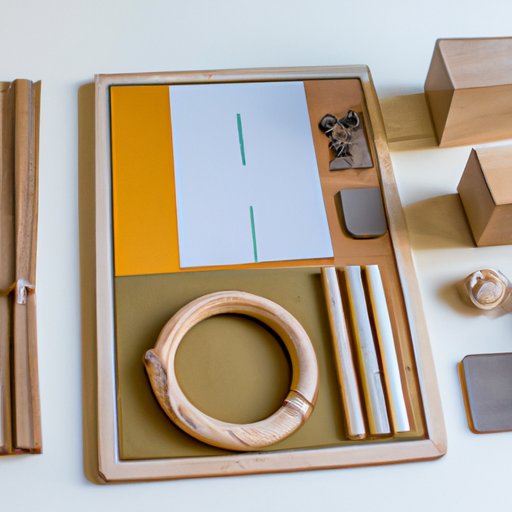Introduction
The Montessori Method of education is based on the teachings of Italian physician and educator Maria Montessori. Her philosophy emphasizes the development of self-directed learning and the appreciation of each student’s unique potential. The goal is to provide a nurturing environment that encourages exploration and engagement, allowing children to reach their full potential. Starting a Montessori school requires a commitment to this philosophy, as well as knowledge of the steps involved in getting it off the ground.

Research the Montessori Method and its Principles
Before jumping into the practical steps of starting a Montessori school, it’s important to become familiar with the Montessori Method and its underlying principles. The most important element of the Montessori Method is respect for the child and their natural development. This means understanding how children learn and providing materials that allow them to explore and discover independently. Other important aspects include the use of multi-age classrooms, mixed ability levels, and the integration of activities across multiple subject areas.
To gain a better understanding of the Montessori Method, start by reading books and articles about the philosophy and its history. You can also attend workshops or conferences to learn more. Additionally, consider joining a local or national organization devoted to the practice of Montessori education.
Develop a Business Plan for the Montessori School
Once you have a good grasp on the Montessori Method and its principles, it’s time to develop a business plan. This document should outline your goals, budget, and plans for financing the school. It should also include an analysis of the local market and regulations related to opening a school in your area.
Start by determining your tuition rates and payment plans. Consider offering flexible payment options to make your school more accessible. Next, research local regulations and licensing requirements. Make sure you understand all the rules and regulations that apply to opening a school in your area. Finally, create a budget and financial goals for the school. Be sure to include costs for facility rentals, supplies, and staff salaries.
Find an Ideal Location for the Montessori School
Once you’ve developed a business plan, it’s time to find an ideal location for the Montessori school. Consider proximity to potential students when selecting a site. Look for locations that are easily accessible and have plenty of parking. Analyze real estate options to find the best fit for your school.

Design the Classroom Layout and Furnishings
Now it’s time to design the classroom layout and furnishings. Choose materials that foster exploration and discovery, such as wooden blocks, puzzles, and manipulatives. Create a space that encourages interaction and engagement, while still providing a safe and comfortable environment. Incorporate age-appropriate furniture and equipment, such as desks and chairs, shelves, and storage bins.
Hire Qualified Educators and Staff
Once the physical space is ready, it’s time to hire qualified educators and staff. Start by creating job descriptions and required qualifications. Then recruit and interview candidates who meet these criteria. Consider hiring experienced teachers who understand the Montessori Method and can effectively implement it in the classroom.

Create Programs and Curriculum to Fit Your Needs
Finally, it’s time to create programs and curriculum to fit your needs. Evaluate existing programs and curriculum to get ideas. Research educational standards and guidelines to ensure your programs and curriculum meet the necessary requirements. Develop customized programs and curriculum that reflect your vision for the school.
Conclusion
Starting a Montessori school is a complex process that requires dedication and commitment. It involves researching the Montessori Method and its principles, developing a business plan, finding an ideal location, designing the classroom layout and furnishings, hiring qualified educators and staff, and creating programs and curriculum. With the right preparation and resources, you can successfully launch a Montessori school and provide a nurturing environment for children to thrive.
(Note: Is this article not meeting your expectations? Do you have knowledge or insights to share? Unlock new opportunities and expand your reach by joining our authors team. Click Registration to join us and share your expertise with our readers.)
